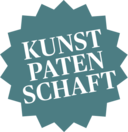Degen: Hofdegen
um 1740/45, Owner: Franz I. Stephan Sohn des Leopold I. von Lothringen
Hofdegen
The pommel of this smallsword is decorated with the arms and emblems of the kingdoms of Hungary and Bohemia: the patron goddess of a city is presenting the Hungarian arms, and the crowned Bohemian lion is clutching two Austrian standards. On the obverse of the grip, Justitia (with scales and sword) is triumphing over a prostrate warrior; on the reverse is a depiction of Athena and Hercules supporting an oval medallion with a portrait of Maria Theresia. The lower part of the grip is decorated with the figures of Abundantia (the personification of abundance) and Clio, the muse of history. Seated on a globe, Clio is clutching a book opened to reveal the letters V.M.D./R.H.W. – Vivat Maria Theresia/Regina Hungariae Bohemiaeque (‘Hail Maria Theresia/
Queen of Hungary and Bohemia’).
This splendid smallsword was presumably a gift from Maria Theresia to her husband, Francis Stephen, Duke of Lorraine. The decoration suggests it was produced between 1740 and 1745 – that is, between Maria Theresia succeeding to the thrones of Bohemia and Hungary and Francis’s election as German Emperor.
With its knuckleguard, two fingerguards, and flat guard, this is a typical example of a baroque smallsword worn at court. The tip of the slender gilt blade is elaborately pierced, and the openings were originally filled with silver inlays, corals, or pearls. The artist who produced this weapon signed his work on the lower ricasso washer: FRANTZ / MATZEN / KOPF / A SALZB. Franz Matzenkopf the Elder was born in the Tyrol and initially worked in Prague. In 1738 he moved to Salzburg, where Prince Archbishop Leopold Anton von Firmian employed him as his official die cutter and medallist. From around 1755, Franz Matzenkopf the Younger also worked as a die cutter. In 1765 a second son, Peter Paul, was accepted as an apprentice (Graveurscholar) at the Imperial Mint in Vienna.
Object data
Object Name
Degen
Culture
Salzburg
Dated
um 1740/45
Owner
Franz I. Stephan Sohn des Leopold I. von Lothringen (1708 - 1765) - GND
Artist
Franz Matzenkopf d. Ä , (Büchsenmacher, Eisen- und Münzschneider) (1700-1776, geboren in Tirol, tätig in Prag und ab 1738 in Salzburg)
Material
Klinge: Eisen, geschmiedet, teils geätzt (Damastdekor). Ätzdekor: feuervergoldet. Gefäß: Eisen, teils geschmiedet, teils gegossen, teils geschnitten, teils graviert, teils vergoldet. Textil. Scheide: Holz. Leder (Schlange). Mundblech, Ortblech: Eisen, teils geschnitten, teils vergoldet. Etui: Holz. Leder. Texil. Ösen, Haken: Eisen.
Dimensions
Degen: L 87 cm x B 10,5 cm x T 7,3 cm
Scheide: L 71,7 cm x B 2,8 cm x T 2 cm, Gewicht: 0,10 kg
Etui: L 91,5 cm x B 10,5 cm x T 9 cm, Gewicht: 0,60 kg
Signed
Auf dem Stichblatt an der Oberseite: "FRANTZ MATZEN KOPF A SALZB"
Inscribed
Am Verstärkungsstück des Griffs eine Darstellung der Klio mit Weltkugel und einem Buch mit der Inschrift "V M T / R H B"
Image rights
Kunsthistorisches Museum Wien, Hofjagd- und Rüstkammer
Inv. No.
Hofjagd- und Rüstkammer, A 2036
Permalink (citable Link) to this page: www.khm.at/it/object/539469/

